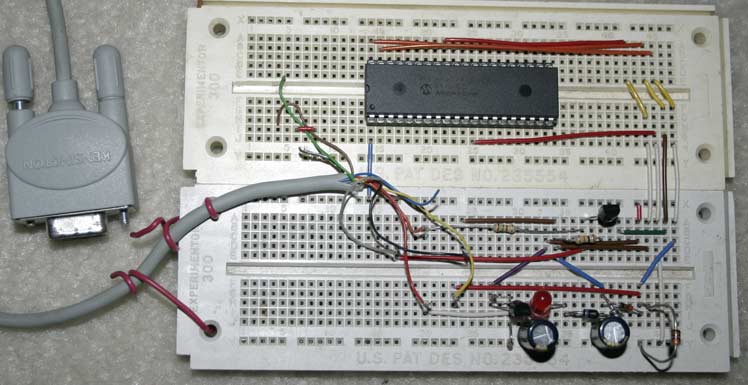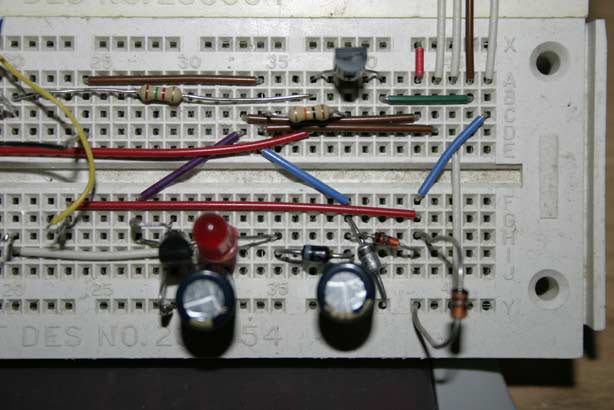|
|
|
My homemade PIC programmer.
This was a programmer I threw together in late 2005 for a project I was working on. It worked great for a few months before it slowly became unreliable. Eventually I made a PC board for it, but it still didn't work. From what I can tell, PIC Programmers work much better when they have a dedicated power supply. This one taps it's power from the serial port and shifts ground potential to do it's thing. R.G. Keen's theory was that the voltage might be just high enough to program it for a while, but that it could affect the chips over the long haul. I've since purchased an AVR STK500. I'm not ruling PIC's out though, since assembler on the AVR is a no mans land compared to the PIC code base.
|
|

No points for cleanliness on this one. The boards have been in and out of storage for the last 20 years, so there pretty filthy. Trivia: The yellow one still had a project on it that hadn't been messed with since 1986. I'm not kidding. It was a digital drum built with 74LS193's and a 555 clock. It used a Simmons Townhouse Tom chip until I did something to burn it up (long missing). Random notes:
The serial connector was salvaged from a Kensington serial mouse. A really nice four-button job that was rendered useless by my then two-year-old son.
I used the red wire to tie the cable down, so the wires wouldn't pull out from being moved.
I built it with parts I had on hand, so most of the values aren't exact. It works regardless.
The PIC (a 16F877A in this case) is plugged into a socket with machined pins. That makes it a lot easier to move between the programmer to the circuit.
|

Here's a closeup shot. Not much to see, but it might help somebody.
|
|
Last update was August 4th, 2006.
Email Dave
Back to Dave's half-assed project page!
|
|

